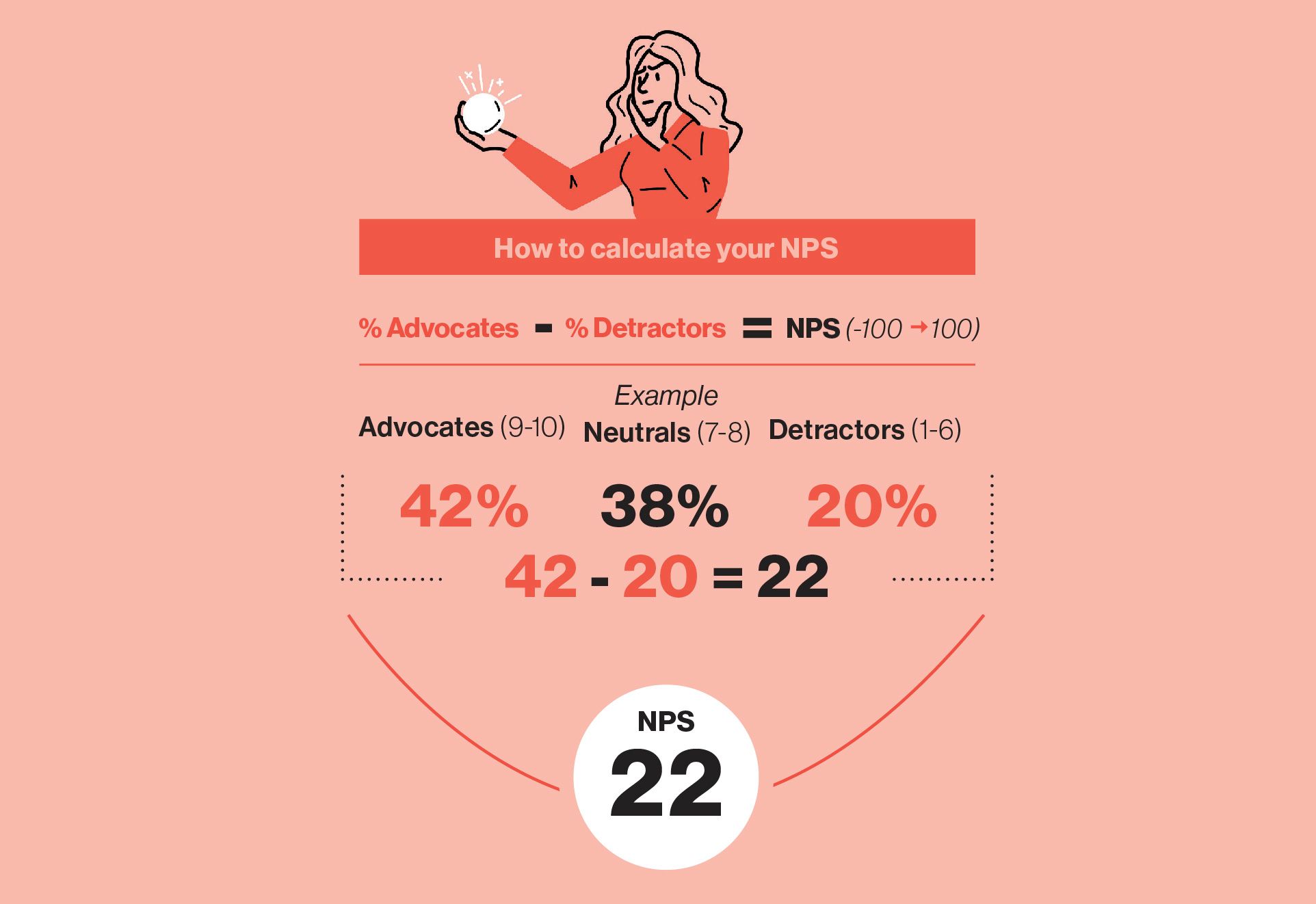Score Big
The marketing world has long championed the Net Promoter Score—and for good reason. How can it help school leaders?

When it comes to word-of-mouth marketing, there is one powerful truth: What other people say about your company matters more than what you say about yourself. What can you do, then, to direct this conversation to benefit your school district—and identify who is having these conversations in the first place?
Some of the most powerful advocates school districts can have are their teachers. Not only do teachers provide that personal touch that is so meaningful to students, but the actions of individual teachers can also keep many families in a particular district. The opposite is also true: Even if your district’s online brand is stellar, a family isn’t likely to stay happy if they are unimpressed by what happens in the classroom.
What your employees say about your schools has a huge impact on how your community—and even prospective teachers—feel about your district. Your school community, from teachers to families to students, acts similarly to guerrilla marketers, sharing messages about your schools organically.
What can you do to take the pulse of this conversation and change it for the better? That is where the Net Promoter Score (NPS) comes in.
What is a Net Promoter Score?
In the marketing world, the Net Promoter Score answers a simple question: How likely is someone to recommend our business or product to a friend? This metric is considered to be more valuable than whether or not a person simply likes a business or product, as they are theoretically willing to put their own reputation on the line by recommending it.
Companies use this metric in one of two ways. First, they use an NPS to gauge how well their product or business is being received by the general public. For example, an online retailer might survey customers after their checkout process to determine how successful the process is from a consumer standpoint. This score helps businesses understand how well they’ve designed their product or process, and it’s a helpful metric to keep in mind as they make decisions about how to improve.
Companies also use the NPS internally. This is called an eNPS or Employee Net Promoter Score. Employees respond to the question, How likely are you to recommend working at our company to a friend or acquaintance? This metric tells a company less about its product and more about the internal culture of its organization. If employees are not willing to recommend working at their company to people in their personal networks, the company needs to figure out why and track this metric as they make systemic improvements.
The internal culture of a company can have a huge impact on the quality of its product. This is especially true in schools, where the product in question is the education of children. If your staff doesn’t enjoy working in your district, it is unlikely that your schools will be able to produce a rigorous, thoughtful learning experience.
A business with a low eNPS is more likely to have high turnover and thus spend more time and resources hiring and onboarding employees than on other, more worthwhile initiatives. In schools, high staff turnover can also make it harder to accomplish big-picture goals. Districts are forced to use their resources to train and recruit new teachers rather than to further grow the teachers they already have.
School leaders could find value in using the NPS in either capacity. For example, you might use it to see how supportive families are of your schools in light of a new charter network opening or before a bond campaign. You could also use an eNPS to better understand how your teachers and other staff members feel about working in your schools.
Because, like most surveys, an NPS can be broken down by demographics, it can be very illuminating to see how different subpopulations vary in their perceptions of your district. For instance, if elementary school teachers are more likely to recommend their school as a workplace than middle school teachers, you can make targeted changes to address why this might be happening.
How to Calculate an NPS
If you have ever used a survey tool, coordinating an NPS will be a piece of cake. Because an NPS is typically derived from two questions at most, sending it is easy—but you may need to incentivize taking the survey if you want to increase your participation rate. You will also need to decide if you want to keep your survey anonymous and whether or not you want to include demographic questions. Requiring participants to identify themselves may make them less likely to answer truthfully or participate at all. However, having more specific information could help you better understand how to build your next steps after the survey.
One fairly straightforward aspect of creating an NPS is writing the survey question itself. Although your question may vary a little bit, it generally follows the same flow as the two questions mentioned earlier: How likely are you to recommend our product or service to a friend? Many marketers decide to enrich their data with a secondary open-ended question: Why did you chose the number you did? This way, you can combine your quantitative data with qualitative data to help identify your next steps.
Interpreting your results is simple. Before you look at all of your responses together, each individual respondent is first scored alone and categorized based on their response as either a detractor, a neutral, or an advocate. A detractor is anyone with a score between 0-6. These people are generally unhappy with your organization. Neutrals are those who answered your question with a score of 7 or 8 and feel ambivalent about your organization. Finally, advocates—those with scores of either 9 or 10—are enthusiastic about their experience with your organization.
Once you have your data, it is time to calculate your NPS. To do so, subtract the percent of respondents who are detractors from the percent of respondents who are advocates. This will leave a number between -100 and 100; that’s your NPS. A negative number indicates that there are more detractors than advocates, so a higher score is always better. While plenty of online calculators can help you get your NPS, the formula is never more complicated than this.
For example, let’s say that you want to find out your NPS among classified staff in your district. Of the people you surveyed, 20% of your respondents were detractors, 38% were neutrals, and 42% were advocates. Your NPS would be 42% minus 20%, giving you a final score of +22.
Is +22 a good score? Average net promoter scores vary widely by industry, with internet providers usually in last place, to no one’s surprise. Whether or not this score satisfies you depends on how you plan to use it. While a +22 may not sound fantastic when you’re accustomed to a traditional letter scale, it shows that you have more advocates than detractors—which is a challenge for many industries.

Using the NPS to Improve Your Marketing
An NPS is useful as a snapshot in time, or it can be used to zero in on how small groups of individuals feel compared to others. Conducting multiple surveys over time allows you to track sentiment as you enact changes, so this may be something that your administration will want to plan annually. If your NPS is internal, it can help you better understand the culture of various subsets of your workforce. Externally, it can also be used to figure out when family satisfaction starts to dip as students progress through your district.
Similar to businesses, school districts can use the NPS for a variety of purposes. Some schools, such as Mounds Park Academy in Minnesota, have used an NPS externally to continually measure family satisfaction. This way, they can track how decisions made at the administrative level impact families’ overall satisfaction with the quality of the education their children are receiving.
Other districts, such as KIPP Texas Public Schools, have used NPS methodology to gauge their employee satisfaction, a crucial data point given the current national teacher shortage. KIPP Texas is able to use this data to target employee dissatisfaction in real time and track how teachers are feeling throughout the school year. For example, if they notice that first-year teachers almost always struggle in the middle of the fall semester, they can provide increased supports at that time to mitigate overall stress.
Because the NPS is such a useful and easy-to-use tool, you won’t want your district missing out on the insights it provides. How you choose to use it could impact your school internally—by targeting groups of teachers who are most disaffected, for example—or externally by helping you figure out how your families are feeling as you prepare for major changes in your district. You can even coach your staff members on how to use the NPS with their own audiences, whether it’s with the teachers they’re leading or the students in their classrooms.
While many guides can help you harness your NPS in innovative ways, there’s one quick tip from the marketing world that applies to almost every situation: Know who to target. While it may be tempting to try and win over your detractors, it is almost always more worthwhile to target your neutrals. Because neutrals don’t feel as strongly about their positions, they are much easier to turn into advocates. Sometimes, even a simple conversation is enough to show them that you care about their perspective and that you are invested in making your district a better place to work and learn.
Addressing your neutrals rather than your detractors isn’t just more effective; it also communicates that you’re devoted to making sure everyone has a great experience in your schools—not just the loudest complainers. If you engage with your neutrals, they are likely to value your efforts, time, and attention. In the end, too, these neutrals could become the advocates who eventually win over your detractors.
The NPS can be a game changer as you seek to better understand the conversations surrounding your district— whether internally or externally. Simple but powerful, it can take you far in harnessing the work that is already happening in your schools. After all, your best recruiters are already right in front of you.

Subscribe below to stay connected with SchoolCEO!


